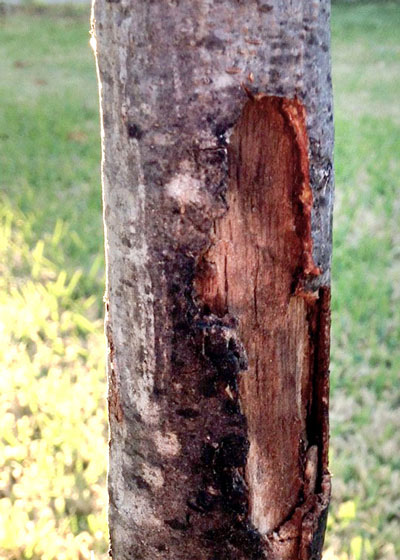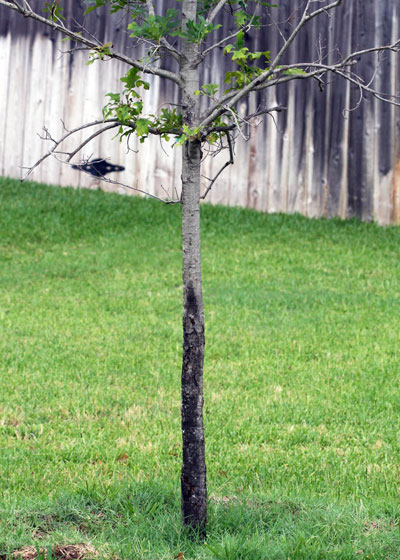Warning of the Week: Red Oak Trunks
Actually, this same information applies to other thin-barked trees such as Chinese pistachios and red maples. And the preventive measure is non-negotiable. You’d better read it!
When someone asks me about a red oak, Chinese pistachio or red maple (Acer rubrum, not Japanese maple with purple-red leaves – Acer japonicum) that is on the decline, I always begin my reply by asking if they are seeing any cracking or splitting of the bark on the trunk.

If they tell me yes, that they are seeing cracking of the bark and that it is splitting away from the trunk, I ask if it’s mainly on the west or south side of the trunk. They always act surprised, as if they think they’ve dialed into a psychic hotline.
The damage shows up there because that’s where the summer’s hot rays hit the dark bark causing it to overheat. Eventually it cracks like an old vinyl cartop out of the 70s.
This doesn’t happen in nurseries or in nature because adjacent trees shade the young saplings. And it doesn’t happen to more mature trees because they develop wide leaf canopies and thicker bark to shade and protect them.
It’s those in-between years where the problems arise – the first two or three years that you have the young trees in your landscape. The bark begins to develop the cracks, and by the third or fourth year the bark stands out away from the wood of the trunk. Eventually decay can set in and black ooze may start seeping down the trunk as the tree goes downhill.

Want to bypass all this agony?
Apply paper tree wrap to the trunk of your new tree the day that you plant it. Wrap the trunk from the ground up to the lowest branches, and leave it wrapped for the first couple of years.
Open it up periodically to be sure all is well beneath the wrap, but don’t leave it exposed to the sunlight for long. Once the top of the tree starts to grow and cast shade onto its own trunk you can think about removing the wrap.

